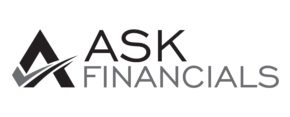Are you saving up for your first home? With prices soaring to new heights and the cost of living putting pressure on budgets, entering the housing market has become quite a challenge.
The Australian Government created the First Home Super Saver (FHSS) plan, which could help some First Home Buyers. But it’s important to know the rules and the maximum amount you can take out.
The scheme lets you put money away in your superannuation account for a down payment on a first house, where you may take advantage of tax breaks and a competitive interest rate. You have the option to make voluntary concessional (before-tax) or voluntary non-concessional (after-tax) payments to your FHSS superannuation.
Improvements that make it easier to access your funds when you’re ready to buy a property have been implemented to the plan in an effort to increase participation.
In the end, these funds may be taken out of the super fund and used as a down payment on a first home purchase or build. In addition to improving the capacity to save more rapidly and effectively, this tactical saving method gives first home buyers a planned route to property ownership.
To know more about the Super Saver Scheme, stay with us.
What is First Home Super Saver Scheme
The First Home Super Saver Scheme provides a route for first home owners to contribute to their superannuation funds and subsequently withdraw them to use as a deposit for the purchase or construction of their primary residence. The initiative is intended to facilitate the process of procuring your first property by establishing specific eligibility criteria and guidelines for accessing your savings.
Who is eligible for the FHSS Scheme?
To be eligible for the FHSS plan, people must:
- You must be at least 18 years old to ask for the money to be released.
- You must be buying your first home in Australia and have never owned property there before, not even a rental property, empty land, or business property.
- You should plan to live in the house for at least six months in the first year after you buy it.
- Have not asked for a release under the FHSS plan before.
How to use the FHSS Scheme?
If you meet the criteria and want to utilise your superannuation for a home deposit, here’s the procedure to follow:
Step 1: Make voluntary contributions
Begin by making voluntary contributions to your superannuation, whether before tax (like salary sacrifice) or after tax. The maximum contribution allowed for this scheme in any financial year is $15,000.
Step 2: Seek an FHSS determination
To buy your home, submit an FHSS determination application through the Australian Taxation Office (ATO) using your myGov account. The ATO will subsequently notify you of the amount available for withdrawal and any associated tax implications.
Step 3: Request the release of your savings
Once you have your determination, submit your application to the ATO for the release of your savings, referred to as a ‘request for release.’ Your super fund is directed by the ATO to release the funds that were initially sent to the ATO. The ATO withholds the necessary taxes and transfers the remaining amount to you. The duration of this process is estimated to be between 15 and 25 days.
Step 4: Acquire or construct your initial residence
You have a period of 12 months from your ‘request for release’ to utilise the funds for purchasing or constructing your first home.
How much and what type of contribution can be made to the FHSS Scheme?
Under the First Home Super Saver (FHSS) scheme, individuals looking to save for their first home can voluntarily contribute to their superannuation fund. These contributions are categorised into two main types and are subject to specific limits:
Voluntary concessional contributions:
Include salary sacrifice amounts or any contributions for which a tax deduction is claimed. Such contributions are typically taxed at 15% within the super fund.
Voluntary non-concessional contributions:
Comprise personal contributions made from after-tax income for which no tax deduction has been claimed.
For both types of contributions, the FHSS scheme permits you to apply for the release of up to $15,000 from your voluntary contributions in any given financial year as part of your eligible contributions. Furthermore, only contributions made from July 1, 2017, are eligible for withdrawal under this scheme.
How much can I take out of the FHSS Scheme?
The most you can get out of the FHSS plan depends on how much you’ve contributed, taking into account both the annual and lifetime caps, as well as any extra money you earned from those payments.
This includes:
- All non-concessional personal voluntary super contributions are not tax-deductible.
- 85% of your concessional wage sacrifice.
- Personal voluntary super contributions with tax deductions (85%).
- Supposed profits on the aforementioned donations.
With the FHSS plan, the most you can take out is up to $15,000 from a single year’s payments and $50,000 from all of them put together. Before any extra money is added, these numbers are what they are.
What are the tax implications when withdrawing funds under the FHSS Scheme?
When you take money out of your FHSS account, the Australian Taxation Office (ATO) takes tax out of the amount you get back. Your projected marginal tax rate plus the Medicare levy are used to figure out this withholding tax. Then, a 30% tax balance is taken away.
If you can’t figure out your profit rate, a flat rate of 17% is used. That amount that was taken out is meant to cover the taxes you owe on these funds at the end of the year.
You have to report as income on your tax return the amount of assessable FHSS released that is shown on your payment statement for the year you took it out. Also, write down the amount of tax that was taken out to make sure you’re paying the right amount. In this step, you make sure that your taxes are estimated correctly. This method makes sure that your tax amount is estimated correctly and that you get any extra tax back.
Pros and Cons of the FHSS Scheme
| Advantage | Disadvantage |
| Efficient taxation: Provides tax advantages to donors who voluntarily pay a lower rate. | Limited access flexibility due to one-time release: The strategy only allows for one money release. |
| The investment returns available to the super fund may be greater than those available to regular savings accounts. | Complexity in navigating the schemes eligibility and contribution |
| There is now a maximum of $15,000 each year, allowing individuals to save up to $50,000 per year. | There is now a maximum of $15,000 each year, allowing individuals to save up to $50,000 per year. |
| Associated earnings: In addition to contributions, earnings that are computed on these contributions may also be disclosed. | The early release of pension funds lowers sums and changes the amount of money saved for retirement in the future. |
| Individual eligibility: Couples, brothers, or friends can use their savings to buy the same house, which increases the amount they can buy as a group. | Ownership requirement: You have to live in the house right after you buy it and for at least six months in the first year. This makes it harder to be flexible, especially for people who want to buy homes as investments. |
Tips to Save under the FHSS Scheme
If you want to save as much money as possible for your first home through the FHSS plan, try these tips:
- Implement salary sacrifice: Talk to your boss about setting up a salary sacrifice plan that lets you put some of your pre-tax pay straight into your pension. This is a good way to save money and get tax breaks at the same time.
- Personal donations can help you save more: You can add to your super amount by putting money in from your after-tax pay. You could save even more by claiming these gifts as tax benefits if you can.
- Keep up with changes to the scheme: Check the FHSS plan rules and contribution guidelines often to see if they have changed. Being up-to-date makes sure that you get the most out of the plan without accidentally breaking its rules.
- Keep an eye on your contributions: Even if you don’t pay attention to the exact caps, it’s important to keep track of the amounts you put in to make sure they fit with your savings goals and the way the FHSS plan works.
- Get help from a professional. Talk to a financial advisor to get advice that is specific to your goals and financial situation. A professional can help you figure out how to make the most of your efforts and get around the FHSS scheme’s many rules.
Epilogue
For many Australians, first home ownership is a major milestone, and the First Home Super Saver Scheme provides a unique chance to save for this accomplishment in a tax-efficient manner.
Understanding the scheme’s qualifying requirements, contribution regulations, and possible advantages and downsides can help you determine whether the FHSS is suitable for you. With careful preparation and expert assistance, you may enhance your savings potential and realise your goal of purchasing a house sooner.
If you need assistance arranging financing for your home or seek professional advice on personal taxes and superannuation arrangements, please visit ASK Financials or schedule a discovery call with us. Our staff is devoted to helping you reach your first home ownership objectives, and we provide specialised solutions to your requirements.
Read More: https://tinyurl.com/asknewsau/
Call Us: 0433 944 055
Book a Free Chat: https://tinyurl.com/askfinancials/


